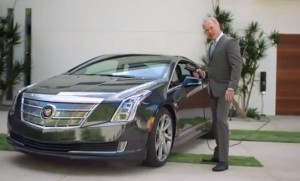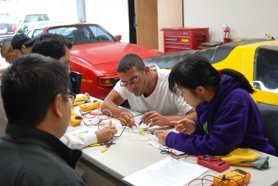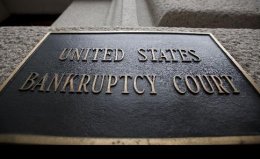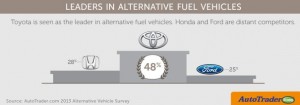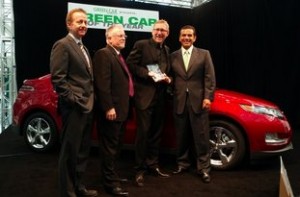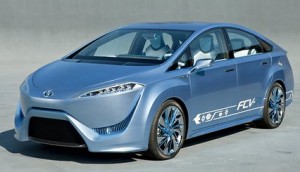 To paraphrase the Kevin Costner movie, “Field of Dreams” – If you build it, they will come.
To paraphrase the Kevin Costner movie, “Field of Dreams” – If you build it, they will come.
Hydrogen fuel cell vehicles continue to struggle with “chicken or the egg” quandary. There’s only a slim hydrogen refueling infrastructure in the US, and the questions of how much fuel cell electric vehicles (FCEVs) will be priced for and how serious car shoppers will take the products and pricing are far from being answered. Plug-in electric vehicle loyalists like Tesla Motors CEO Elon Musk tend to scoff at FCEVs. Yet, other automakers seem to be taking these vehicles seriously.
Hyundai is preparing to launch a fuel cell crossover in the US next year. Hyundai’s president of research and development Kwon Moon-sik thinks cost factors are pointing the company in the direction of FCEVs instead of batteries. Several of his auto industry colleagues share that perspective. Kwon says that advanced lithium ion batteries in electric vehicles remain expensive, and he sees few opportunities for cost reductions coming soon. He thinks hydrogen fuel cells offer more hope for volume savings. The zero emissions part of FCEVs also offers appeal to automakers. Executives at Toyota, Honda, Daimler, General Motors, Ford, and Nissan are mapping out FCEV launches between 2015 and 2020; some of them share Kwon’s perspectives about the cost of FCEVs falling. It’s all part of the partnership alliance formed earlier this year on fuel cell systems between GM and Honda; and another, similar alliance between Nissan, Daimler, and Ford.
The process does require patience. Hyundai already started production of a hydrogen-powered version of its Tucson crossover; the company plans to produce only 1,000 units for sale globally by 2015. Toyota just offered a sneak peak at its FCV concept hydrogen-powered vehicle that it plans to roll out in 2015 (see photo above); the company is hoping to use it to popularize FCEVs as the Prius did for hybrids. “We think it could be the best zero emissions solution that hits the market,” said Bill Fay, general manager of Toyota’s US sale division.
Honda has helped car show attendees gain enthusiasm for FCEVs after driving its limited production FCX Clarity. Another FCEV will be joining the Honda lineup; the automaker just put out a sketch that hints at what will be shown at the upcoming Los Angeles Auto Show. Honda says the new FCEV Concept expresses a “potential styling direction” for a next-generation FCEV due in 2015. Honda appears to be preparing for competition from Toyota’s FCEV being launched that same year.
As for the limited number of hydrogen refueling stations, California plans to open 68 more of them by 2015. There are only nine open in the state now; 19 are in development and another 12 private or demonstration stations are operational. The governor recently signed a bill offering funding for 100 hydrogen fueling stations in the state. California is also thinking about changing its tax credit system so that it would stop favoring plug-in electric vehicles over FCEVs. The US Dept. of Energy continues to make amends with the hydrogen and fuel cell communities through its H2USA program launched in May. It’s a public-private partnership with Hyundai, Mercedes-Benz, Nissan, and Toyota to promote development of the hydrogen refueling infrastructure. The Obama administration just announced a $4 million grant for research into hydrogen fuel storage systems. Then-California Governor Arnold Schwarzenegger might have aided the skeptics with his campaign nearly 10 years ago for the “hydrogen highway” to come soon; but steps are being taken forward these days.
Northern California AltCar Expo and ACT Expo release dates
Two significant alt-fuel vehicle conferences have been scheduled. AltCar Expo is seeing its partnership with Bay Area Air Quality Management District come together. The Northern California AltCar Conference & Expo will take place on Friday and Saturday, March 14-15, 2014, at the Craneway Pavilion in Richmond, Calif. Check out the event’s website to stay current on the schedule.
The Alternative Clean Transportation (ACT) Expo is looking forward to seeing its record attendance numbers go up yet again. Next year’s conference has been scheduled May 5-8, 2014, back at the Long Beach Convention Center in Long Beach, Calif. It will be co-located with the 14th biennial NGV Global Conference and Exposition. “Merging North America’s largest clean fleet expo with the world’s leading natural gas vehicle conference will result in the largest gathering of clean transportation stakeholders that North America has ever seen,” Erik Neandross, CEO of event manager Gladstein, Neandross and Associates, said in the press release.
Clean Cities offers AFLEET tools and mobile app for stations
Argonne National Laboratory has developed the Alternative Fuel Life-Cycle Environmental and Economic Transportation (AFLEET) Tool for Clean Cities stakeholders to estimate petroleum use, greenhouse gas emissions, air pollutant emissions, and cost of ownership of light-duty and heavy-duty vehicles using simple spreadsheet inputs. The US Dept. of Energy’s Clean Cities Program enlisted the expertise of Argonne to develop a tool to examine both the environmental and economic costs and benefits of alternative fuel and advanced vehicles. You can download the AFLEET tool in Excel and user guide in PDF free of charge at this website.
The tool provides three calculation methods depending on the user’s goals. The Simple Payback Calculator examines acquisition and annual operating costs to calculate a simple payback for purchasing a new alternative fuel vehicle as compared to a similar conventional vehicle, as well as average annual petroleum use, greenhouse gases (GHGs), and air pollutant emissions. The Total Cost of Ownership Calculator evaluates the net present value of operating and fixed costs over the years of planned ownership of a new vehicle, as well as lifetime petroleum use, GHGs, and air pollutant emissions. The Fleet Energy and Emissions Footprint Calculator estimates the annual petroleum use, GHGs, and air pollutant emissions of existing and new vehicles; it takes into consideration that older vehicles typically have higher air pollutant emission rates than newer ones.
For those seeking information on more than 15,000 charging and alternative fuel stations within the US, Clean Cities and National Renewable Energy Laboratory now have a mobile app for iPhone or iPad users. You can quickly find out where EV public charging stations, and fueling pumps for B20 biodiesel, compress and liquefied natural gas, E85 ethanol, hydrogen, and propane, can be found.
But wait, there’s more!……..
- Brett Hauser, a founding member of the Open Charge Alliance (OCA), a global consortium of public and private electric vehicle infrastructure leaders, and president of Greenlots, had a few things to say about the solutions offered by open standards for electric vehicle charging stations instead of proprietary networks. Here’s a little bit of what he wrote in Greentechmedia….. Charging networks based on open communications standards are an excellent alternative to proprietary networks and have been future-proofing Europe’s EV networks for close to four years now. The open model provides site hosts the freedom to switch network management providers without having to purchase new charging stations. It also stimulates technical innovation by allowing free market competition to push down the costs of both charging station hardware and back-end software, while dramatically derisking the hardware purchase for site hosts.
- Pricing is coming out on Cadillac’s extended-range ELR – $75,995 as a starting price and there’s a marketing deal with the famous department store. For $89,500, you can buy the 2014 Saks Fifth Avenue ELR. You get a White Diamond exterior finish, a Jet Black or Light Cashmere interior shade, a 240-volt charger thrown in the deal, and a relationship with an “ELR Concierge Representative.” These are only available to 100 people, and General Motors only expects to sell a limited number of ELRs anyways.
- Nissan/Renault chief Carlos Ghosn is backing off big numbers for electric vehicle sales targets. The global automaker was going to sell 1.5 million EVs by 2016. So far, it’s only been about 120,000 units, primarily Nissan Leafs. At the current speed, it’s going to take about five years longer than initially anticipated, he said.
- Energy Vision is now offering a new publication, “Turning Waste into Vehicle Fuel.” Funded in part by Clean Cities, it’s a first-of-its-kind roadmap for cities, communities, farms, and other generators of organic waste to develop renewable natural gas.
- Kia is planning on producing an electric version of its Soul crossover subcompact to arrive next year in the US. It will be Kia’s first EV sold outside South Korea and is expected to travel 120 miles on a single charge.
 Education and accessible, clear information is needed out there to get past the stumbling block that holds consumers back from owning an electric vehicle. If you take a look at a new educational website for electric vehicle (EV) shoppers, you’ll find answers to frequently asked questions:
Education and accessible, clear information is needed out there to get past the stumbling block that holds consumers back from owning an electric vehicle. If you take a look at a new educational website for electric vehicle (EV) shoppers, you’ll find answers to frequently asked questions:

